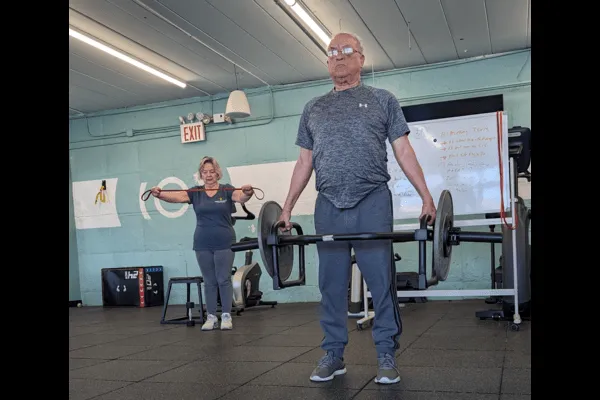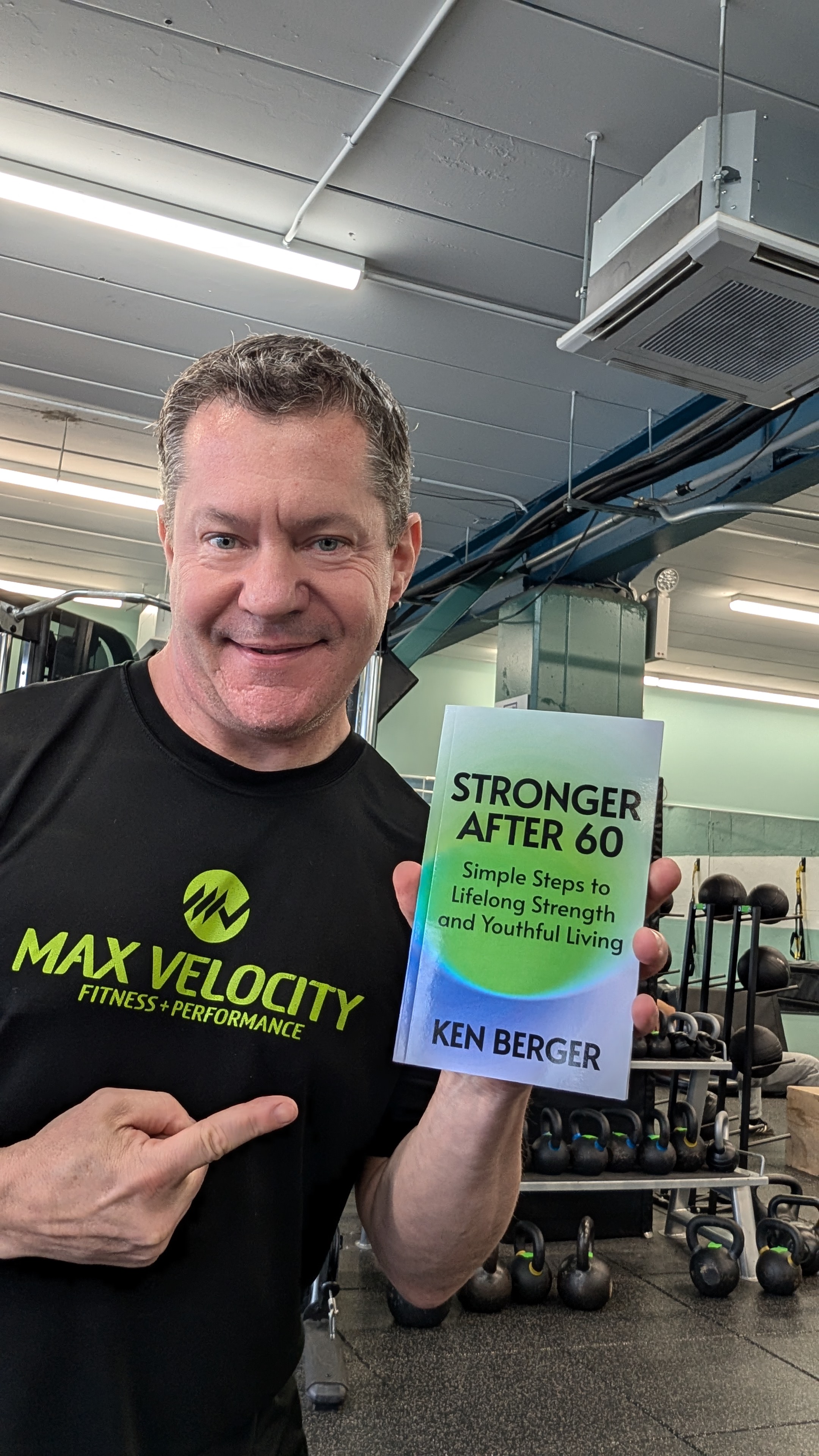

Why you need to get strong, and stay strong over 60
By Ken Berger
When most people get into their 60s, their strength, balance and reflexes aren’t what they used to be. So it’s not surprising that falls are the leading cause of injury for people 65 and over, according to the Centers for Disease Control and Prevention.
The good news is, the physical and cognitive decline that can lead to falls for people over 60 can be prevented with strength training.

Strength training for people over 60 is like the fountain of youth. That’s right, strength training can actually delay – and even reverse – the biggest symptom of aging. This is known as sarcopenia, or age-related muscle loss.
As we get older, we naturally lose muscle mass, which can lead to decreased strength, mobility, balance, reflexes and overall function. By engaging in regular strength training exercises, older adults can slow down and even reverse this muscle loss, helping them stay strong and active for years to come.
Strength training, also known as resistance training, involves using weights, resistance bands or bodyweight exercises to build muscle strength and endurance and avoid the loss of muscle mass.
Strength training for people over 60 is also highly effective at improving bone density, which can prevent osteoporosis and lower the risk of fractures from falls.
No wonder AARP lists the “No. 1 exercise to do as you get older” as the squat.

A common myth is that strength training with free weights (dumbbells, kettlebells, medicine balls, bands, etc.) is dangerous. When prescribed and supervised by an educated trainer, the truth is actually quite the opposite. Strength training safely puts stress on the bones, stimulating bone growth and enhancing skeletal health, which promotes overall longevity and well-being.
In addition to its physical benefits, strength training for people over 60 also offers numerous mental and emotional advantages. Regularly engaging in resistance exercises has been shown to boost mood, reduce stress and anxiety and improve cognitive function. This happens through the release of endorphins and other hormones, which stimulates the production of Brain-Derived Neurotrophic Factor (BDNF).
The more BDNF our body produces, the healthier and more numerous our neurons become since BDNF triggers the repair of damaged neurons and the creation of new ones. By enhancing brain health, strength training for people over 60 can result in a more positive outlook, sharper cognition and better reflexes to avoid falls and other health risks from a sedentary lifestyle.

Given all the benefits of strength training for people over 60, it’s alarming that more older adults aren’t exercising regularly. According to the U.S. Dept. of Health and Human Services, only 28-34 percent of adults age 65-74 are physically active. Why would so many older Americans ignore the mounting medical proof that leading an active lifestyle is essential to living longer and enhancing the quality of life?
The answer is simple, and two-fold:
The equipment and exercise programs found in most gyms, recreation centers and even senior centers were designed with younger people in mind. Imagine a 65-year-old retiree with the beginning signs of osteoporosis, poor posture and limited strength walking into the typical big-box gym. Confronted with a lineup of complicated machines that are difficult to get in and out of (much less operate), and heavy weights they view as dangerous, their instinct is to head back home to the couch and binge-read old issues of Reader’s Digest.
The exercise programs that actually were designed for seniors are boring, ineffective and not challenging enough to produce the desired results. I don’t know about you, but when I’m 70 years old, I want to be doing bicep curls and deadlifts … not touching my toes in a Silver Sneakers class or sitting in a chair doing yoga poses.
In short, the fitness industry is failing the very people who need its benefits the most. With an educated, caring trainer to teach proper form, assign safe and appropriate exercises, and provide motivation and support, people over 60 should be enjoying all the benefits of exercise.
The days of washboard abs and 300-pound deadlifts might be over. But being strong, alert and independent with the balance and endurance to play with your grandchildren and enjoy the active life you worked so hard for is priceless.
I’m a certified personal trainer and nutrition coach specializing in strength training for people over 60. My clients enjoy an active lifestyle, more energy, better balance and strength, improved mood and clarity, and start to feel younger and more vibrant after only a few sessions.
I just created a new program called “60 Strong,” and I’m looking for a few people over 60 who want to work with me privately at my Little Neck, N.Y., studio to live a life they love through strength training. If you or a loved one would like to help me pilot the program, shoot me an email (ken@maxvelocityfitness.com) and I’ll be in touch with the details.
Want To Learn More First? Download A FREE Copy Of My Best-Selling Book ... Stronger After 60!
My new best-selling book, Stronger After 60, is your ultimate guide to optimal health, fitness and longevity through the power of science and healthy habits.
Stronger After 60 will change the way you think about aging. This book is designed for real people who want simple solutions to maintain their strength and youthful energy while enjoying the best things in life without restriction. It’s your roadmap to longevity, wellness and enjoying your 60s and beyond like someone half your age.

And TODAY, You Can Get Your Very Own Copy of Stronger After 60 ... for FREE!
Just click the button below, fill out your info, and a copy of Stronger After 60
will be on its way to your inbox in seconds!
Don't miss out on this life-changing opportunity. Get your FREE copy of Stronger After 60 NOW.




